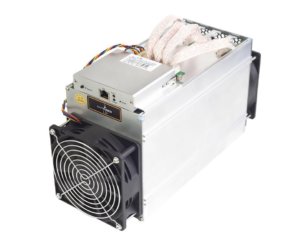Leading US exchanges aim to defend themselves in HFT case
Major US exchanges, such as NYSE, Nasdaq, and Chicago Stock Exchange, argue that the plaintiffs have to do more than simply state that the exchanges created products and services that HFT firms wanted and made a profit in doing so.

Several major US exchanges, including Bats Global Markets, Inc. (now known as Cboe Bats LLC), Chicago Stock Exchange, Inc., Direct Edge ECN, L.L.C., NYSE Arca, Inc., Nasdaq OMX BX, Inc., New York Stock Exchange, L.L.C., and The Nasdaq Stock Market L.L.C., have sought to reply to allegations that they created a two-tiered system that favoured high-frequency trading firms at the expense of other market participants.
Let’s recall that the plaintiffs in the case – City of Providence, Rhode Island, Plumbers and Pipefitters National Pension Fund, Employees’ Retirement System of the Government of the Virgin Islands, and State- Boston Retirement System, allege that the exchanges provided HFT firms with a set of products and services, including proprietary data feeds, co-location services, and complex order types, which the HFT firms used in combination to systematically manipulate the public securities markets and take advantage of non-HFT market participants. These products and services, used in concert, allegedly allowed HFT firms to divert billions of dollars in trading proceeds from the plaintiffs (and the Class).
On Friday, June 29, 2018, the defendant exchanges submitted a memorandum of law in support of their motion to dismiss the complaint. The document, seen by FinanceFeeds, includes detailed arguments about why the complaint against the exchanges should be nixed.
Among the arguments supporting the exchanges’ stance is that the plaintiffs have neither pleaded facts about any of their specific trades or securities nor described how any particular trades or securities were affected by an HFT firm’s use of the products and services they challenge. The defendants note that the plaintiffs concede that the scheme they allege “could conceivably be applicable” to all securities bought or sold in the United States. Yet the complaint contains no factual allegations sufficient to show anything about the impact (positive, negative, or nonexistent) of the products and services at issue on the plaintiffs’ securities trades (none of which is specified), meaning it is not discernable from the SCAC whether Plaintiffs were harmed at all or how the relief they seek would remedy any legal injury.
That is seen as particularly problematic by the exchanges as the plaintiffs seek not just monetary damages, but also broad injunctions that would fundamentally change how markets operate. According to the exchanges, the plaintiffs should be able to:
- point to some trade of theirs that they think was somehow negatively influenced and
- explain how the relief they seek would fix that alleged problem.
According to the exchanges, the plaintiffs fail to allege loss causation. The plaintiffs are urged to offer more than the “general allegations” they present. The plaintiffs’ allegations that some type of manipulation occurred on some exchange and that it somehow negatively affected their trades in unidentified stocks does not meet that standard, especially given their concession that the alleged manipulation was carried out by unnamed HFT firms, the exchanges insist.
The exchanges also argue that the plaintiffs fail to plead scienter. This is because they offer no more than mere allegations that the exchanges created products and services that certain customers (HFT firms) wanted and made a profit in doing so. Leaping from those allegations to the inference that the exchanges intended to defraud potentially every public investor in the past nine years is not even plausible, and not consistent with the scienter requirement, the exchanges note. The Second Circuit has made abundantly clear that general allegations of motives possessed by all corporations, such as increasing corporate profitability, are insufficient to plead scienter.
The case, captioned “In Re: Barclays Liquidity Cross and High Frequency Trading Litigation” (1:14-md-02589), continues at the New York Southern District Court.









